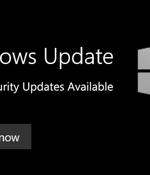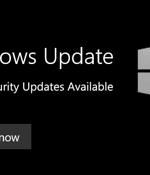Security News

Microsoft has announced that Excel 4.0 macros will now be disabled by default to protect customers from malicious documents. Starting July 2021, Windows admins could also use group policies and users the 'Enable XLM macros when VBA macros are enabled' setting from the Excel Trust Center to disable this feature manually.

Cybercriminals are spamming website contact forms and discussion forums to distribute Excel XLL files that download and install the RedLine password and information-stealing malware. In some phishing lures seen by BleepingComputer, the threat actors have created fake websites to host the malicious Excel XLL files used to install the malware.

During this month's Patch Tuesday, Microsoft has patched an Excel zero-day vulnerability exploited in the wild by threat actors. Microsoft also patched a second Excel security flaw used during the Tianfu Cup hacking contest last month, a remote code execution bug tracked as CVE-2021-40442 and exploitable by unauthenticated attackers.

Microsoft has released security updates as part of its monthly Patch Tuesday release cycle to address 55 vulnerabilities across Windows, Azure, Visual Studio, Windows Hyper-V, and Office, including fixes for two actively exploited zero-day flaws in Excel and Exchange Server that could be abused to take control of an affected system. The most critical of the flaws are CVE-2021-42321 and CVE-2021-42292, each concerning a post-authentication remote code execution flaw in Microsoft Exchange Server and a security bypass vulnerability impacting Microsoft Excel versions 2013-2021 respectively.

Microsoft has released security updates as part of its monthly Patch Tuesday release cycle to address 55 vulnerabilities across Windows, Azure, Visual Studio, Windows Hyper-V, and Office, including fixes for two actively exploited zero-day flaws in Excel and Exchange Server that could be abused to take control of an affected system. The most critical of the flaws are CVE-2021-42321 and CVE-2021-42292, each concerning a post-authentication remote code execution flaw in Microsoft Exchange Server and a security bypass vulnerability impacting Microsoft Excel versions 2013-2021 respectively.

It's a light November 2021 Patch Tuesday from Microsoft: 55 fixed CVEs, of which two are zero-days under active exploitation: CVE-2021-42321, a Microsoft Exchange RCE, and CVE-2021-42292, a Microsoft Excel security feature bypass bug.CVE-2021-42321, the remote code execution vulnerability in Microsoft Exchange Server 2016 and 2019, is due to issues with the validation of command-let arguments.

Microsoft will soon begin disabling Excel 4.0 XLM macros by default in Microsoft 365 tenants to protect customers from malicious documents. Excel 4.0 macros, or XLM macros, were first added to Excel in 1992 and allowed users to enter various commands into cells that are then executed to perform a task.

Due to the coronavirus pandemic, companies around the globe quickly transitioned to remote work to mitigate the spread of COVID-19 in-house. As a result, remote workers are logging on for the virtual workday on their home networks and at times even via their personal devices, leading to new security risks.

Threat researcher explains why it's tricky to tell the difference between legitimate Excel Macros and ones that deliver malware. The problem is that bad actors have started using Excel sheets and macros as a new way to deliver malware.

A defibrillator management platform was riddled with vulnerabilities including a remote command execution flaw that could seemingly be invoked by uploading an Excel spreadsheet to the platform. Or so warned the US's Cybersecurity and Infrastructure Security Agency, which said the Defibrillator Dashboard software, made by medical devices firm Zoll, contained six flaws in total, the combined effect of which could present an infosec Swiss cheese for malicious people to exploit.